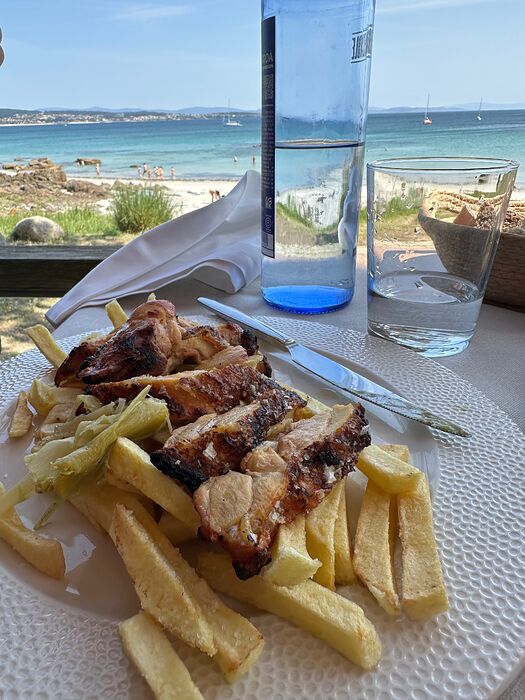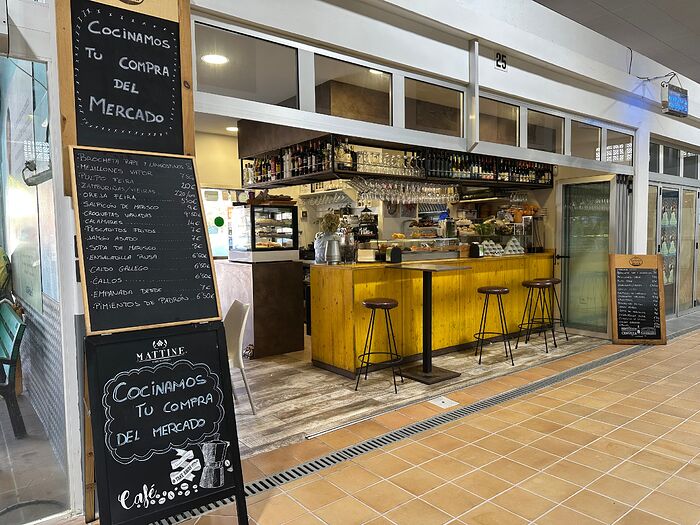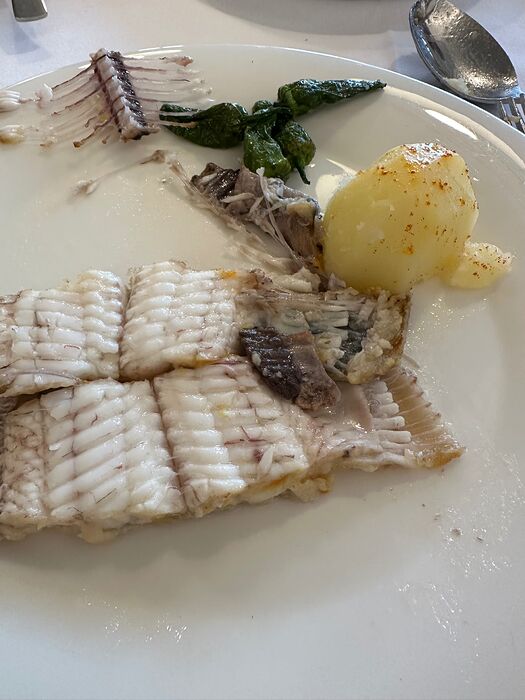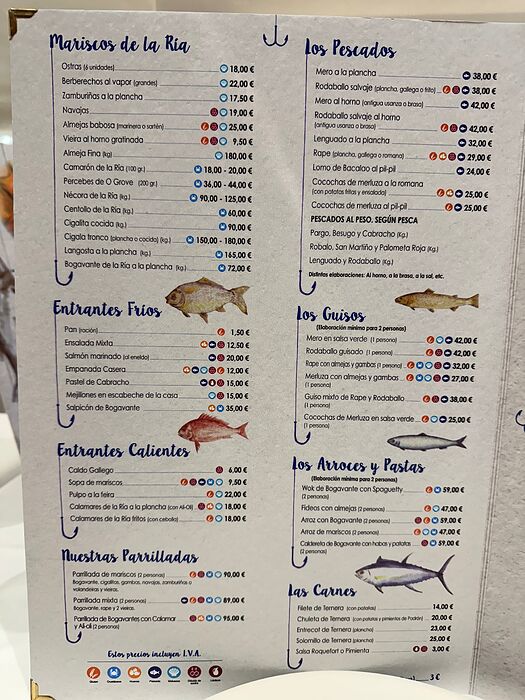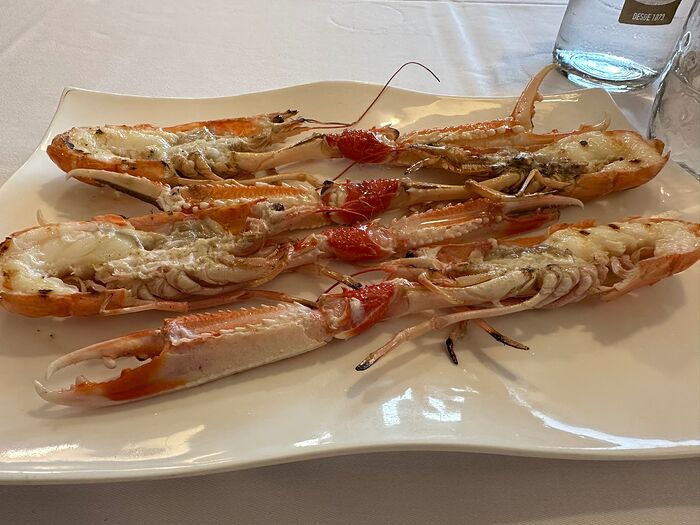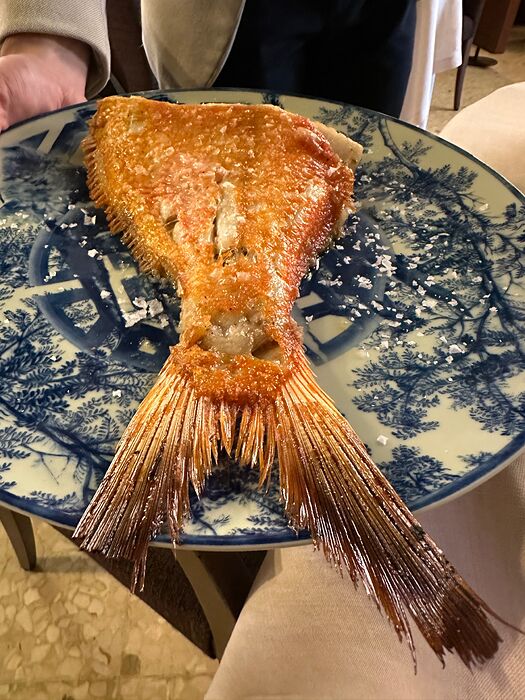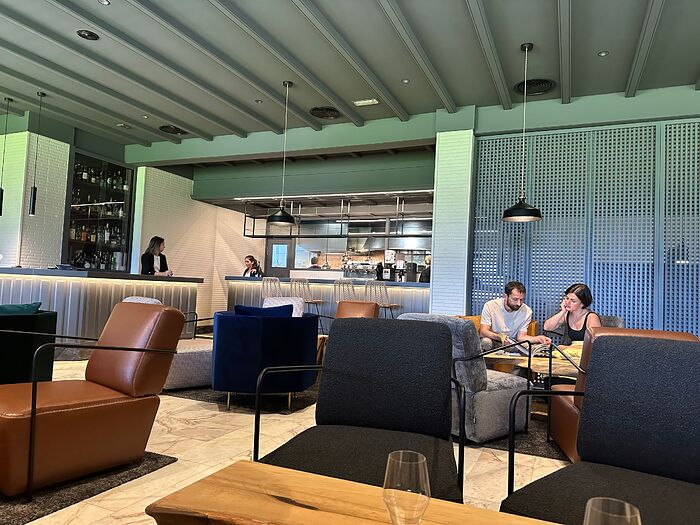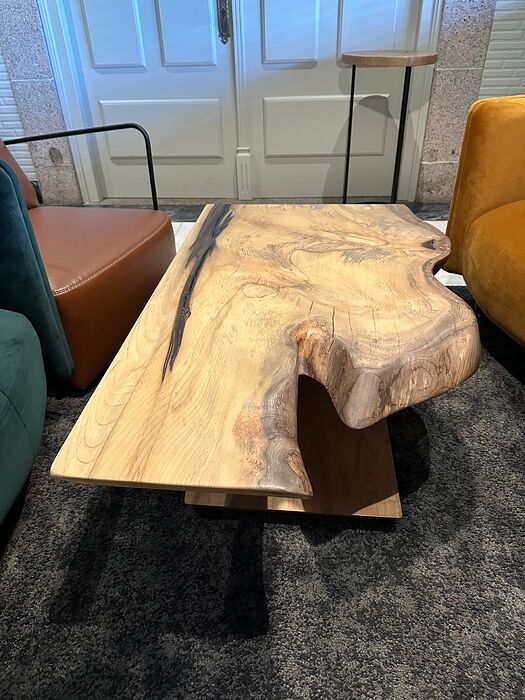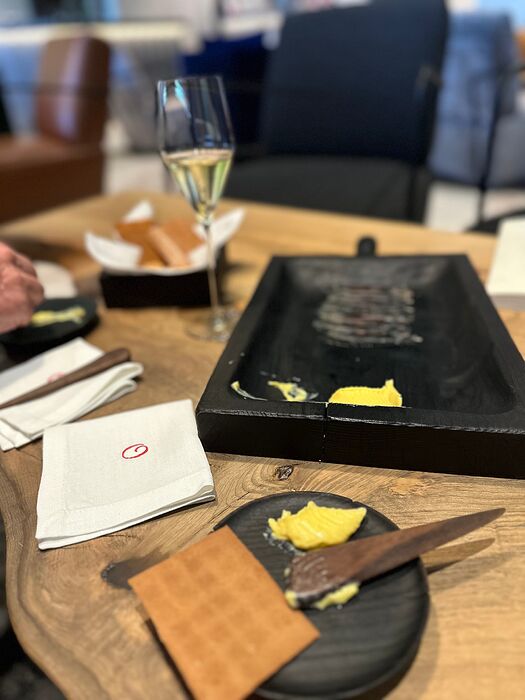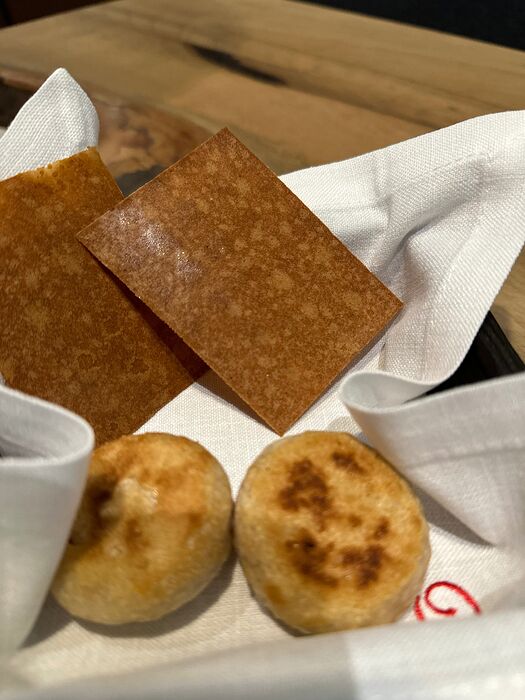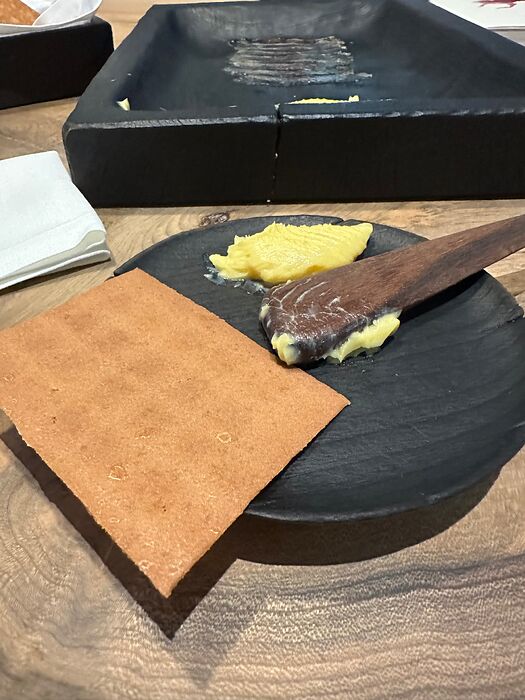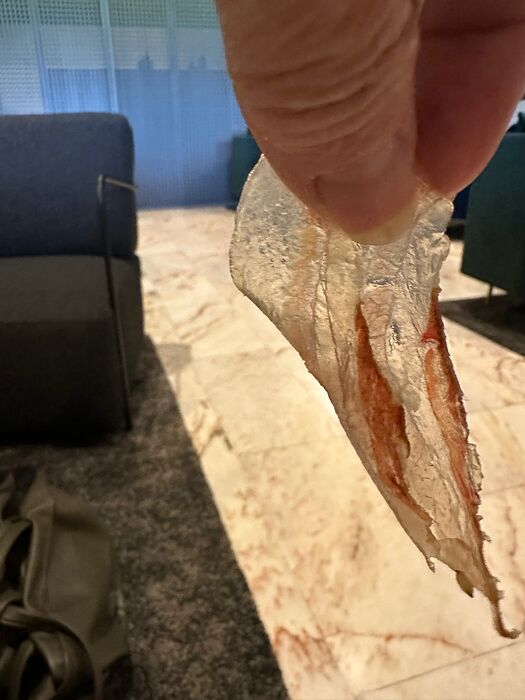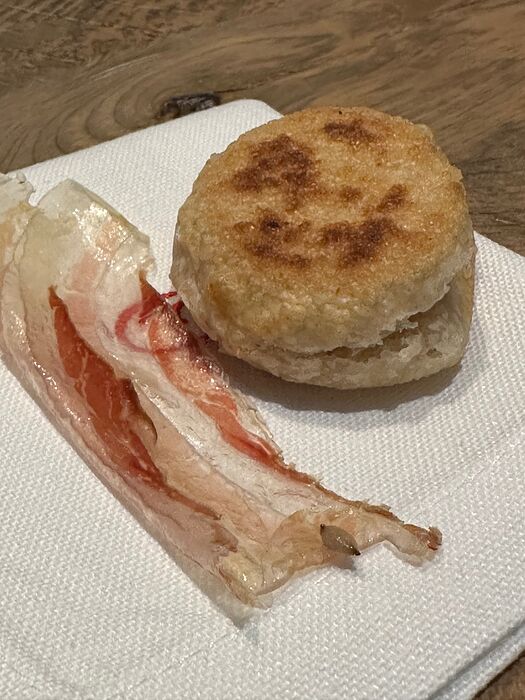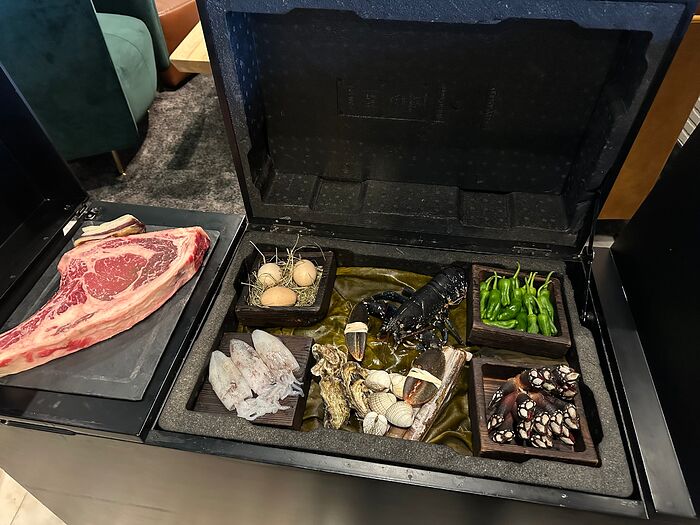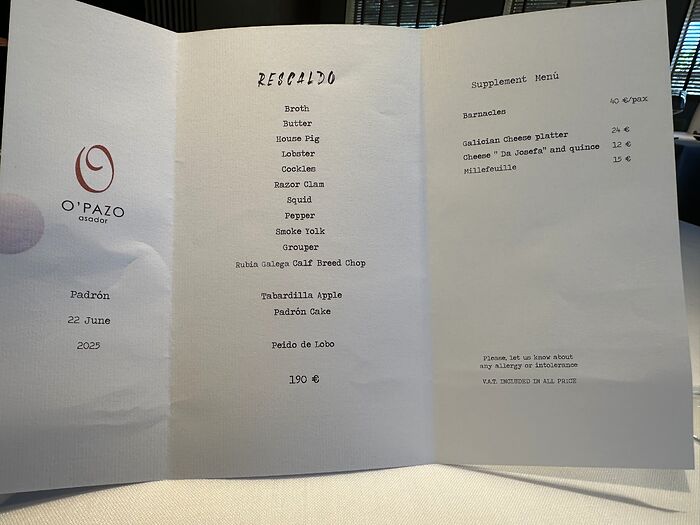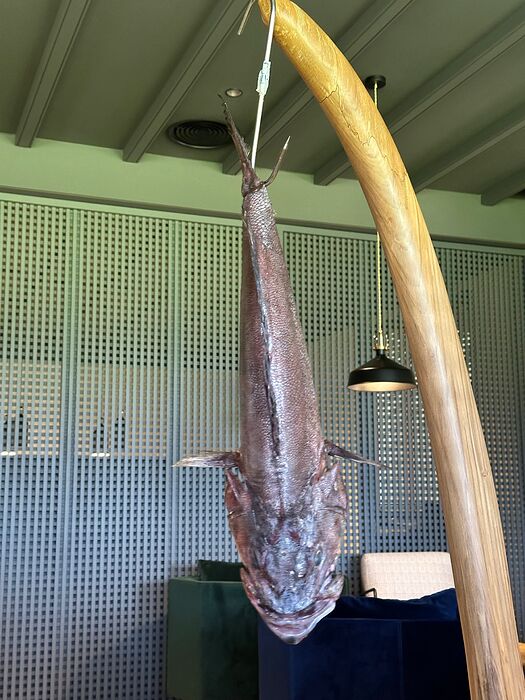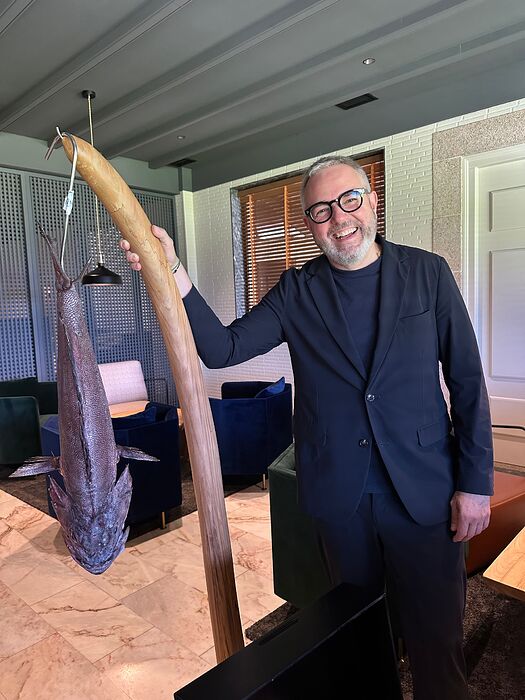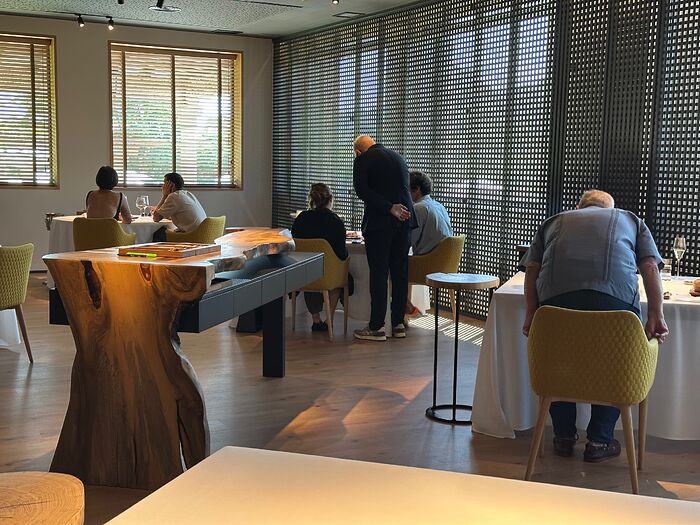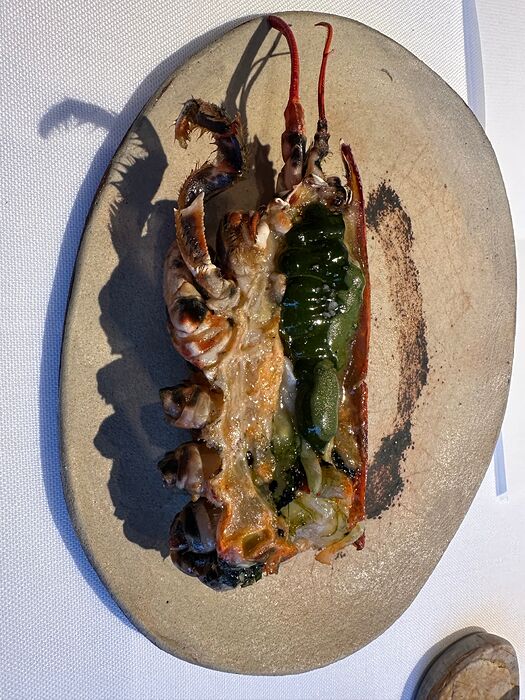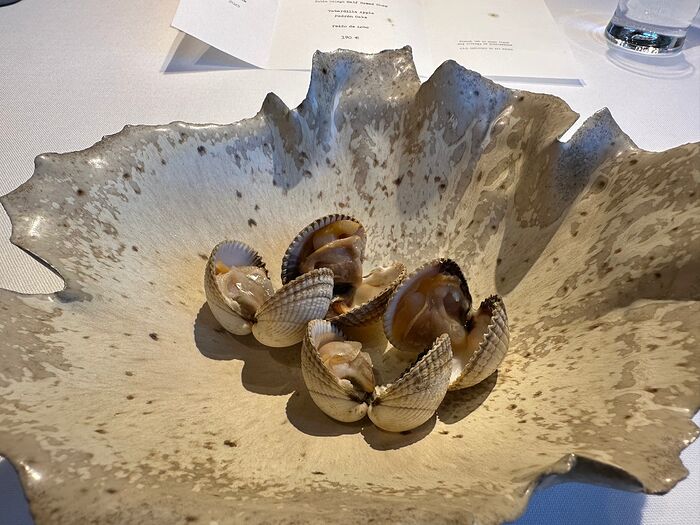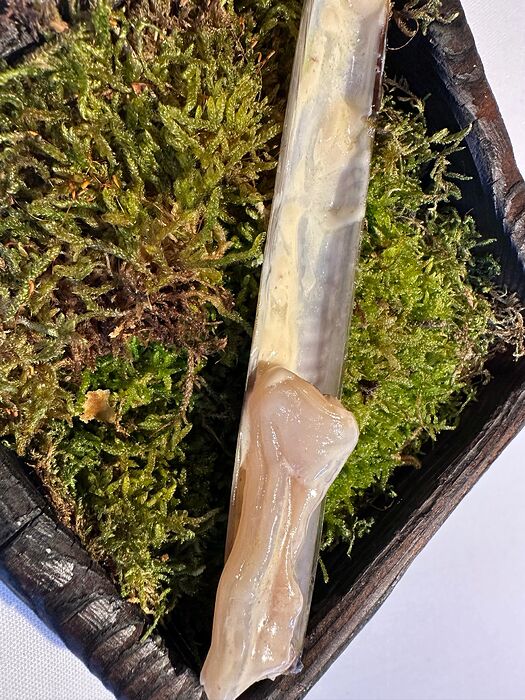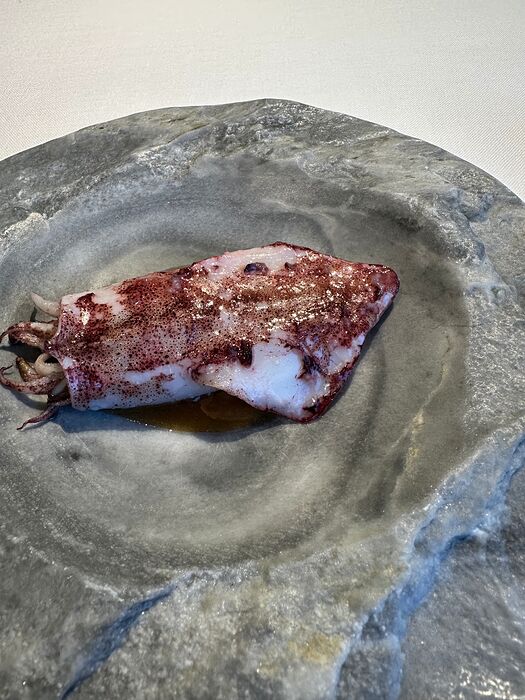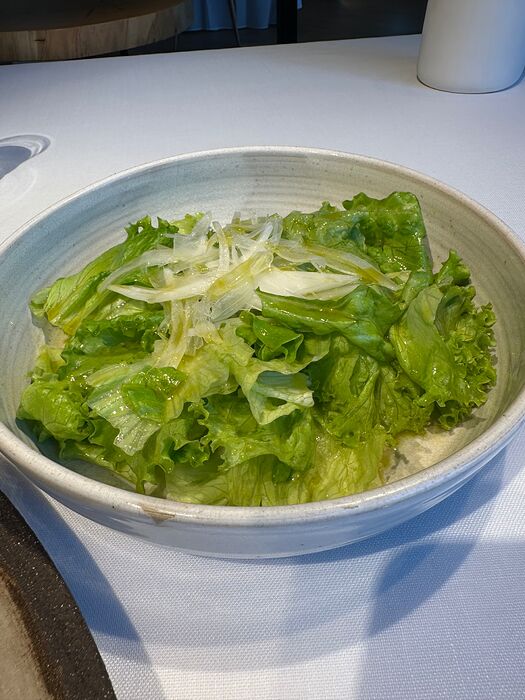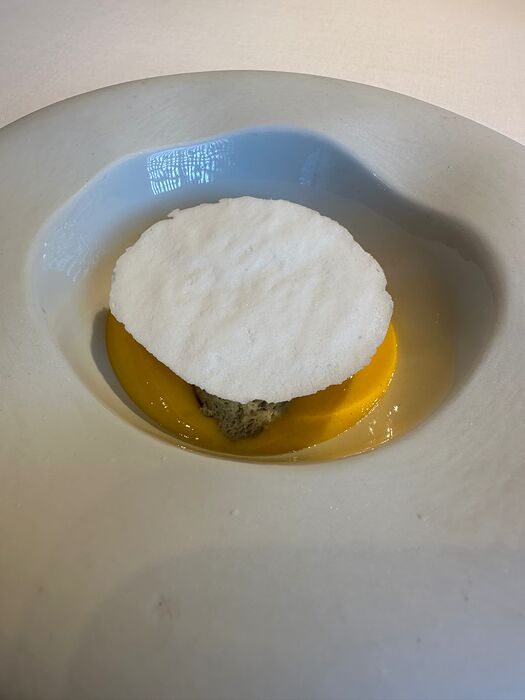We arrived in Santiago de Compostela yesterday and will stay at the Parador for three nights. We have a standard double room and it’s lovely. Highly recommend lodging here IF you can secure a room.
Our first dinner in the city, last night, was chosen for its mention as a Michelin Bib Gourmand, and for its location, a scant block–downhill–from the Parador.
We had a good meal at A HORTA DO OBRADOIRO, my partner being more enthusiastic than me, but this was due to our choices and the next time, I would order differently.
We began with a dish from the “para comparatIr” (to share) section—a round bread made with chestnut flour and stuffed with a mix of Galician Arzua-Ulloa and chicharrones. No wonder this is listed under the category “to share!” We were both stuffed to the gills and I had barely a quarter of the serving!
For the main dish, we ordered the rice with pork “solomillo” and hake with coconut and pineapple in tempura batter. Our server immediately nixed this, telling us that the rice alone was enough for both of us. I love when servers honestly advise us to refrain from over-ordering. Does this happen often in the US? (I’m not sure). We took her advice but, unfortunately, I wished that we had ordered the battered hake, as the pair of American pilgrims seated next to us (surprisingly, the only Americans we over heard since our arrival) raved about this fish dish.
The rice with pork sadly paled in comparison with that pork rice I had at SeBe in Lanzarote a year ago. That stand out as among the best meat/rice dishes I’ve ever had the fortune to sample.
The dish here was good; we liked the rice very much(no soccarrat) but the pork was slices of very rare pork laid atop the cazuela of rice. So the pork was not incorporated into the rice bu served, rather, as an addition. It was very good but I cannot help regretting not ordering that hake, or any of the fish specialties of the day which included turbot and besugo, and San Martin (??) among several others. I imagined that I would be gorging on fish and shellfish at our next stop, near O"Grove, so I was keen to try some meat while in inland Santiago.
To finish up, this is a lovely restaurant, with eclectic, vaguely
shabby chic" decor, and a wide menu of interesting-sounding dishes. I might not return, given the other tempting address in this city, but I would not hesitate to recommend to anyone wanting a place convenient to the parador where one can eat for a most reasonable price (we paid 44 euro, with Albarino and water) for the two dishes, plus the highlight of the meal: An entrante (complimentary) of a sublime puree of mussels atop a handkerchief-thin crispy wafer. This looked pretty served on the rounds wood plate traditionally used as a vessel for Octopus in Galicia.
Dining room (there is also an open-air section)
Terrific Galician bread, with mussel puree in foreground:
Portioning chestnut bread stuffed with cheese and chicharrones:
Close up of entrante, to share, for sure!!
Restaurant exterior, about a block from the Parador and the Cathedral:
I forgot to take a pic of the pork rice.





































